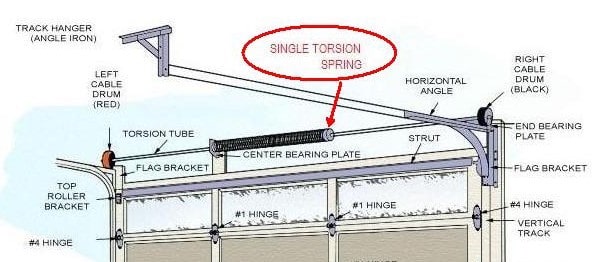Top 10 Garage Door Safety Tips – Preventing Garage Door Injuries
Posted Wednesday, August 24th, 2016

Ask Cressy – How long should the double springs last on a garage door?
Great question from one of our valued customers! The life span of any spring is determined by the amount of cycles or ups and downs of the door. One cycle is one opening and one closing of the garage door. Most doors have a minimum cycle life of springs; 10,000 cycles. Springs can be upgraded to accommodate a higher cycle life for doors that have higher daily usage.
If you need assistance with a spring repair, be sure to give Cressy Door and Fireplace a call. Spring repair and/or replacement can be very dangerous even deadly.
Top 10 Garage Door Safety Tips
While the IDA and DASMA recognize June as Garage Door Safety month, the team at Cressy Door and Fireplace thought we should remind you of the top 10 garage door safety tips for keeping your family safe around garage doors this fall. Be sure to follow these 10 easy tips and give us a call if you have any questions.
Tip #1 Replace Old Springs
Garage door springs are arguably the most dangerous part of the garage door. Springs wear out, and when they break, injuries can result. If you have an older garage door, be sure to have the springs inspected by a professional and replaced if needed. If the door has two springs, replace both, even if one is not broken. This will not only prevent additional damage, it will assure your garage doors work efficiently and safely.
Tip #2 Squeaky Springs
Springs can squeak and be noisy. This is caused by normal use and does not necessarily indicate a problem. First try using a spray-on lubricant. If the noise persists, give us a call and we’ll schedule a service technician to come out and evaluate it.
Tip #3 Cable Check
Visually check the cables that attach the spring system to the bottom brackets on both sides of the door. If the cables are frayed or worn, they are in danger of breaking and should be replaced immediately. Due to the dangers associated with high spring tension, never attempt to replace them yourself.
Tip #4 Safety Cables
If your garage door has extension springs, a safety cable is used to secure the springs to the wall or ceiling at each end. When the garage door is in the down position, extension springs are under high tension. If the spring breaks, it can cause serious injury. A safety cable is often used to keep the broken spring contained. On the off chance you have an extension spring and no safety cable, give us a call for an immediate safety inspection.
Tip #5 Tamper Resistant Brackets
Since the bottom brackets on a garage door are connected to the door’s springs, these brackets are under extreme tension. Only a trained garage door system technician should adjust them. Most of the doors we install today come with tamper resistant hardware that prevents loosening of the brackets by a novice.
Tip #6 Safety Reverse
Since 1993, all openers manufactured for the US must include a second safety-reversing feature such as photoelectric eyes. These are installed near the ground. Once the invisible beam is broken, the door reverses automatically. If your opener lacks a similar safety-reversing feature, it’s time to get a new opener.
LiftMaster Safety Check Video
Tip #7 Challenged Door
If your door does not go up and down smoothly, you may have an unsafe garage door condition on your hands. Even older garage door systems should operate smoothly. If the awkward garage door operation continues when the door is manually operated, you may have a spring system that is out of balance. This can cause premature wear and tear on other door components. The spring system is dangerous and should be repaired immediately and by a trained professional.
Tip #8 Finger Watch
fingers by placing them between the garage door sections to pull down on the garage door. According to DASMA Standard 116, if your door lacks pinch-resistant joints, it is recommended to have lift handles or suitable gripping points installed on the inside and outside of the garage door. Even if your door has an opener, the door must occasionally be operated manually. Never place your fingers between the door sections.
Tip #9 Scheduled Maintenance
Your garage door system is the largest moving appliance in your home and is typically used on a daily basis. Over time, parts will wear out and break, creating a serious safety hazard. Monthly safety checks are a must for your garage door system. We also recommend annual scheduled maintenance by a trained professional. Keep your door operating safely and smoothly every day.
Tip #10 Do-It-Yourself
Cressy Door and Fireplace NEVER recommends installing or repairing a garage door or garage door system by yourself. It is too dangerous. Please give our trained professional a call. Your safety and the safety of your family depend on it.
For information on keeping your kids DOOR safe, click here.